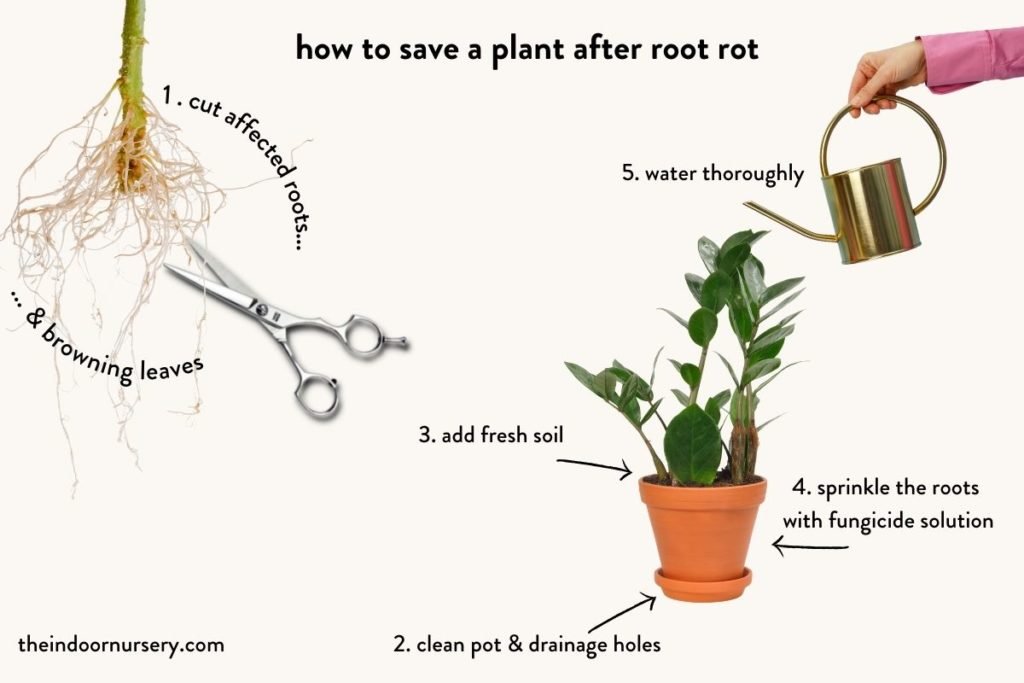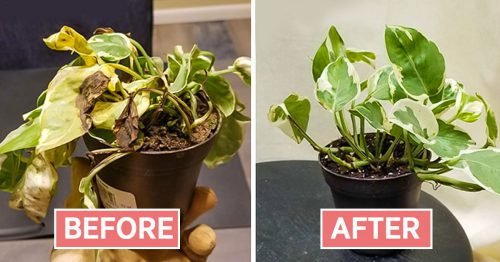Recognizing the Warning Signs of Root Rot
Root rot is a silent killer of plants, often going unnoticed until it’s too late. However, by recognizing the warning signs, you can take prompt action to save your plant. Can you save a plant with root rot? Yes, but early detection is crucial. One of the most common symptoms of root rot is yellowing leaves. As the roots begin to decay, they are unable to absorb the necessary nutrients, causing the leaves to turn yellow and wilt. Another sign of root rot is droopy stems, which can be accompanied by a soft, mushy texture to the roots. It’s essential to distinguish root rot from other plant diseases, such as leaf spot or powdery mildew, to ensure effective treatment. For instance, if the yellowing leaves are accompanied by black spots, it may be a sign of leaf spot rather than root rot. By monitoring your plant’s health and watching for these warning signs, you can take swift action to prevent the spread of root rot and give your plant the best chance of recovery.
Understanding the Causes of Root Rot
Root rot is often a preventable problem, but it requires a understanding of its underlying causes. Overwatering is one of the most common causes of root rot, as it creates an ideal environment for fungal growth. When the soil is consistently waterlogged, the roots are deprived of oxygen, leading to decay and rot. Poor drainage is another contributing factor, as it prevents excess water from being drained away from the roots. Fungal infections, such as Pythium and Phytophthora, can also cause root rot, especially in plants that are already stressed or weakened. By understanding these causes, you can take proactive steps to prevent root rot from occurring in the first place. For instance, using well-draining potting mixes and avoiding overwatering can go a long way in preventing root rot. Additionally, maintaining good air circulation around the plant and providing adequate light and nutrients can help to prevent fungal infections. By taking these preventative measures, you can reduce the risk of root rot and give your plant the best chance of thriving.
How to Save a Plant with Root Rot: Emergency Care
If you suspect that your plant is suffering from root rot, it’s essential to take immediate action to prevent further damage. Can you save a plant with root rot? Yes, but prompt treatment is crucial. The first step is to repot the plant in fresh, well-draining soil. This will help to prevent the spread of the fungal infection and give the roots a chance to recover. Next, prune any affected roots, making sure to disinfect your pruning tools between cuts to prevent the spread of the fungus. Adjusting your watering habits is also critical, as overwatering can exacerbate the problem. Reduce watering to once a week, and make sure the soil has a chance to dry out slightly between waterings. By taking these emergency measures, you can give your plant the best chance of recovery. Remember, the key to saving a plant with root rot is to act quickly and decisively, so don’t delay in taking action.
Treating Root Rot with Fungicides and Other Remedies
Once you’ve taken the initial steps to rescue your plant from root rot, it’s time to consider treatment options. Can you save a plant with root rot using fungicides? Yes, fungicides can be an effective way to combat fungal infections. However, it’s essential to choose a fungicide specifically designed for root rot and follow the instructions carefully to avoid harming the plant. Another option is to use hydrogen peroxide, which can help to kill fungal spores and promote healthy root growth. A more natural approach is to use cinnamon, which has antifungal properties and can help to prevent the spread of root rot. When using any of these remedies, it’s crucial to ensure the plant is in a well-ventilated area and the soil is not waterlogged, as this can exacerbate the problem. By understanding the pros and cons of each treatment option, you can make an informed decision about the best course of action for your plant. Remember, prompt treatment is key to saving a plant with root rot, so don’t delay in taking action.
Reviving Your Plant: Post-Treatment Care
After treating root rot, it’s essential to provide your plant with the right care to promote recovery. Can you save a plant with root rot by adjusting its care routine? Absolutely. Start by adjusting your watering schedule to ensure the soil is consistently moist but not waterlogged. Provide your plant with adequate light and nutrients, as these are essential for healthy growth. Monitor your plant closely for signs of recovery, such as new growth, firmer stems, and a return to its natural color. Be patient, as recovery from root rot can take time. Avoid over-fertilizing, as this can put additional stress on the plant. Instead, opt for a balanced fertilizer that promotes healthy root growth. By providing your plant with the right care and attention, you can help it recover from root rot and thrive once again.
Preventing Future Root Rot: Long-Term Strategies
To prevent root rot from occurring in the future, it’s essential to adopt long-term strategies that promote healthy root growth and prevent fungal infections. Can you save a plant with root rot by taking preventative measures? Yes, by taking proactive steps, you can significantly reduce the risk of root rot. One key strategy is to use well-draining potting mixes that allow excess water to escape, reducing the risk of waterlogged soil. Avoiding overwatering is also crucial, as this is a common cause of root rot. Make sure to check the soil regularly and only water when necessary. Maintaining good air circulation around the plant is also important, as this helps to prevent fungal spores from spreading. Additionally, consider repotting your plant in the spring or summer when it becomes pot-bound, as this can help to prevent root rot. By adopting these long-term strategies, you can help to prevent root rot and keep your plant healthy and thriving.
Common Mistakes to Avoid When Dealing with Root Rot
When trying to save a plant with root rot, it’s essential to avoid common mistakes that can hinder recovery or even make the problem worse. One common mistake is over-pruning, which can cause further stress to the plant and reduce its chances of recovery. Underwatering is another mistake to avoid, as this can cause the plant to become stressed and more susceptible to root rot. Ignoring the problem or delaying treatment is also a mistake, as root rot can quickly spread and cause irreparable damage. Additionally, using too much fertilizer or repotting the plant in soil that is too dense can also hinder recovery. Can you save a plant with root rot by avoiding these common mistakes? Yes, by being aware of these potential pitfalls, you can increase the chances of successfully treating root rot and saving your plant. By taking a careful and informed approach, you can help your plant recover from root rot and thrive once again.
Conclusion: Saving Your Plant from Root Rot
In conclusion, rescuing a plant from root rot requires prompt action, careful attention to detail, and a thorough understanding of the causes and treatment options. By recognizing the warning signs of root rot, understanding its causes, and taking immediate action to treat the problem, can you save a plant with root rot? Yes, with the right approach, it is possible to save your plant and prevent future occurrences of root rot. Remember to avoid common mistakes, such as over-pruning and underwatering, and focus on providing optimal care and conditions for your plant to thrive. By following the step-by-step guide outlined in this article, you can increase the chances of successfully treating root rot and saving your plant. Don’t wait – take action today to rescue your plant from root rot and give it the best chance of recovery.









